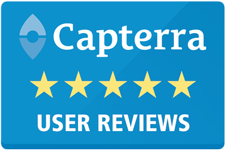Master your gym’s performance with analytics dashboards

Running a gym involves more than just managing memberships and classes; it requires careful analysis to measure your success and identify areas for improvement. This is where gym analytics dashboards come into play. By harnessing the power of data tracking, you can monitor crucial KPI (Key Performance Indicators), gain actionable insights, and make smarter business decisions. In this blog, we will explore how to use gym analytics dashboard to optimize your gym’s performance.
Key Features of Gym Analytics Dashboards to Drive Performance
1. Real-Time KPI Monitoring
One of the greatest benefits of a gym analytics dashboard is the ability to track your KPI in real time.
Key metrics such as membership growth, class attendance, retention rates, and revenue can be viewed instantly.
Monitoring these KPI helps you stay on top of performance and make adjustments when necessary.
- Track membership trends: Know when new members are joining and when they’re dropping off.
- Class popularity: Identify which classes are the most popular and when your busiest hours are.
By consistently monitoring KPI, you can identify opportunities and threats before they become bigger issues.
2. Actionable Insights for Data-Driven Decisions
A gym analytics dashboard turns raw data into actionable insights.
These insights allow you to understand member behavior, track goals, and identify trends that affect your gym’s success.
For example, by tracking KPI related to class
attendance,
you can adjust schedules to optimize participation.
- Member behavior: Know which promotions work, which services are most used, and which members may need special attention.
- Revenue patterns: Gain insights into your gym’s revenue streams, so you can maximize income and reduce expenses.
By analyzing these insights, you can make informed decisions on everything from
marketing strategies to pricing adjustments.
3. Customized Data Tracking for Better Control
When it comes to running a gym, every data point counts.
Data tracking tools on your gym analytics dashboard let you keep tabs on every important aspect of your operations,
from member check-ins to sales performance. This customization ensures you’re focusing on the metrics that matter most.
- Track membership conversions: How many leads turn into paying members? This helps you fine-tune your sales funnel.
- Monitor employee performance: Are trainers meeting their targets? Track performance metrics tied to staff productivity.
With data tracking, you get a holistic view of your
business,
ensuring you’re on top of key factors that drive success.
4. Predictive Analytics for Future Planning
A gym analytics dashboard doesn’t just provide insights into past performance—it can also help predict future trends.
Predictive analytics can be used to forecast everything from membership growth to seasonal fluctuations in class attendance.
- Forecast membership trends: Use past data to anticipate when membership growth may slow down or peak.
- Anticipate staffing needs: Predict busy times and adjust staffing levels accordingly.
With predictive analytics, you can make more strategic plans, ensuring that your gym stays ahead of the curve.
5. Enhanced Member Engagement Through Data
By using gym analytics dashboards, you can personalize member interactions based on data.
For instance, when tracking member activity, you’ll be able to spot members who are less active and proactively reach out to re-engage them with special offers or customized plans.
- Personalized communication: Send tailored emails or promotions based on a member’s visit history or activity level.
- Engagement tracking: Measure the effectiveness of your engagement strategies and adjust your approach as needed.
With data tracking, you can ensure that every member feels valued, which ultimately drives retention and satisfaction.
6. Efficient Operational Management
Operational efficiency is key to maintaining a profitable gym.
Gym analytics dashboards provide you with the tools needed to optimize operations by measuring things like staff performance,
resource utilization, and equipment usage.
- Resource management: Track the usage of equipment to ensure that everything is functioning properly.
- Staff productivity: Measure staff effectiveness in handling members, especially during peak times.
The ability to track these factors gives you control over operational management and helps you reduce inefficiencies.
Conclusion
Using a gym analytics dashboard is one of the most effective ways to track KPI, gain insights, and drive your gym’s performance to the next level. By tracking real-time data, improving operational efficiency, and personalizing engagement with your members, you’ll be in a much stronger position to grow your gym sustainably. If you’re ready to start harnessing the power of data tracking for your gym, it’s time to explore how Zen Planner can simplify your analytics and give you a clearer view of your business.
Book a Demo today to discover how Zen Planner can help you manage your gym’s performance more effectively and make data-driven decisions.





